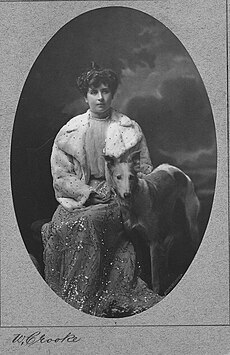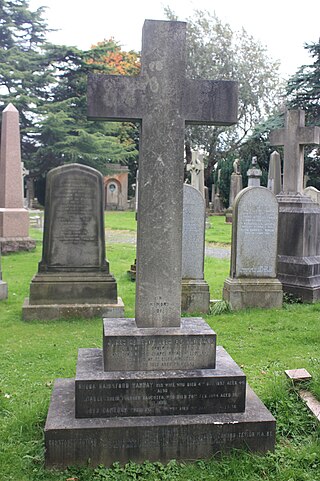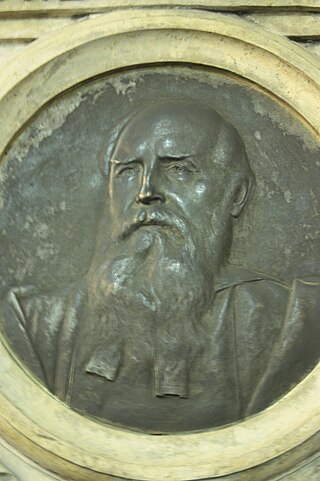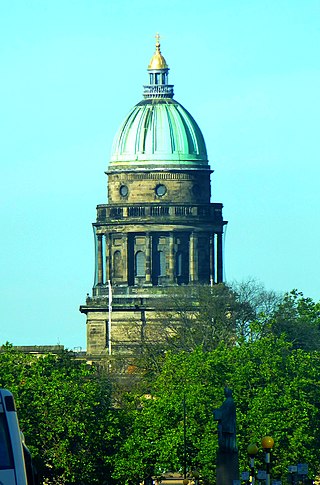


Flora Macaulay (1859 - 1958) was a Scottish newspaper editor. She was editor of The Oban Times in Oban, Scotland. [1]



Flora Macaulay (1859 - 1958) was a Scottish newspaper editor. She was editor of The Oban Times in Oban, Scotland. [1]
She was born Flora Anne Cameron, at 7 Lutton Place in Edinburgh. [2]
Her father was Duncan Cameron, who was associated with the printing and stationery firm of Macniven and Cameron of Edinburgh, Scotland and the inventor of the "Waverley" pen nib. [3] Her mother was Mary Brown Small, a descendant of the Smalls of Dirnanean. Flora's younger sister was Scottish painter Mary Cameron. Her father bought the Oban Times in 1882 and placed Flora's eldest brother as editor.
Flora firstly married Robert Blair, a minister, on 29 October 1889. [4] They originally lived in Glasgow but they relocated to Edinburgh when Blair got a position as minister of St John's Church. They then lived at 13 Lynedoch Place near Dean Bridge. [5]
In 1911, after the death of her first husband, Flora married Edinburgh policeman, George Macaulay. [3] [4]
After her husband's retirement, the couple moved to Oban, where under the name Flora Macauley, she replaced her brother as editor of the Cameron family owned The Oban Times newspaper. [3] Flora and her husband lived on the second floor of the Oban Times building, allowing Flora to be involved in every aspect of the paper's production. [6] Her editorial style was very pro-Gaelic, including supporting Highland bagpipers [6] and the ancient Scottish sport of shinty. In 1947 Flora established the Macaulay Cup for shinty. [1] Flora remained involved with the management of the newspaper until her death at age 99. [1]
She died in Oban on 31 January 1958 but was buried with her first husband, Rev Blair, in Dean Cemetery in west Edinburgh. The grave is marked by a highly ornate Celtic cross carved in grey granite by Stewart McGlashan. The grave lies on the central path in the first north extension. [7]
Her nephew, Alan Cameron, eventually succeeded her as editor. [8]

The Dean Cemetery is a historically important Victorian cemetery north of the Dean Village, west of Edinburgh city centre, in Scotland. It lies between Queensferry Road and the Water of Leith, bounded on its east side by Dean Path and on its west by the Dean Gallery. A 20th-century extension lies detached from the main cemetery to the north of Ravelston Terrace. The main cemetery is accessible through the main gate on its east side, through a "grace and favour" access door from the grounds of Dean Gallery and from Ravelston Terrace. The modern extension is only accessible at the junction of Dean Path and Queensferry Road.

The Camanachd Association is the world governing body of the Scottish sport of shinty. The body is based in Inverness, Highland, and is in charge of the rules of the game. Its main competitions are the Tulloch Homes Camanachd Cup and the Mowi Premiership and the Mowi Valerie Fraser Camanachd Cup.

The Grange is an affluent suburb of Edinburgh, just south of the city centre, with Morningside and Greenhill to the west, Newington to the east, The Meadows park and Marchmont to the north, and Blackford Hill to the south. It is a conservation area characterised by large early Victorian stone-built villas and mansions, often with very large gardens. The Grange was built mainly between 1830 and 1890, and the area represented the idealisation of country living within an urban setting.

Oban Camanachd are a shinty team based in Oban, Argyll and Bute, Scotland who currently play in the MOWI Premiership. One of the oldest Camanachd clubs they were founded in 1889.

Robert Blair was a Scottish minister and a Gaelic scholar.
The Oban Times is a local, weekly newspaper, published in Oban, Argyll and Bute on a Thursday. It covers the West Highlands and Islands of Scotland, reporting on issues from the Mull of Kintyre to Kyle of Lochalsh on the mainland, to the Inner and Outer Hebridean Islands with Argyll, and Lochaber as its heartlands.

Oban is a resort town within the Argyll and Bute council area of Scotland. Despite its small size, it is the largest town between Helensburgh and Fort William. During the tourist season, the town can have a temporary population of up to over 24,000 people. Oban occupies a setting in the Firth of Lorn. The bay forms a near perfect horseshoe, protected by the island of Kerrera; and beyond Kerrera, the Isle of Mull. To the north, is the long low island of Lismore and the mountains of Morvern and Ardgour.

The Macaulay Association Camanachd Cup is a trophy in the Scottish sport of shinty. It is competed for by the eight highest-placed league teams from the north and south areas of Scotland at the end of the previous season. The first winner of the cup, in 1947, was Newtonmore.

James Cameron Lees KCVO (1835–1913) was a Church of Scotland minister and author at the end of the 19th century and the beginning of the 20th.

Dirnanean House is part of a private, traditional Highland estate located near Enochdhu in Moulin parish, Blairgowrie, Perth and Kinross, Scotland, 10 miles ENE of Pitlochry. The Dirnanean estate is situated adjacent to the 64-mile waymarked Cateran Trail.

Mary Margaret Cameron was a Scottish artist, renowned for her depictions of everyday Spanish life. She exhibited 54 works at the Royal Scottish Academy between 1886 and 1919.

→
Janet Milne Rae usually known as Mrs. Milne Rae, was a Scottish novelist and missionary born at Willowbank, Aberdeen. She began to write fiction while living in India, beginning with Morag: A Tale of Highland Life in 1872.

Mary Mackellar was a prominent Highland Scottish poet, Scottish Gaelic-English translator and campaigner for the Gaelic language and culture of the 19th century.

James Mitchell (1830–1911) was a Scottish minister and social organiser. He served as Moderator of the General Assembly of the Church of Scotland in 1901.

Hugh Macmillan FRSE FSA (1833-1903) was a Scottish minister of the Free Church of Scotland who served as their Moderator of the General Assembly in 1897. He was a prolific author on theological subjects and the relationship between God and Nature. His most popular book Bible Teachings in Nature ran to 15 editions in both UK and USA and translated into several languages.

John McMurtrie FRSE (1831–1912) was a Scottish minister and naturalist. He served as Moderator of the General Assembly of the Church of Scotland in 1904. As a naturalist he had a special interest in conches.
Helen Louisa Kerr, LLD JP was a Scottish social reformer.
Thomas McLauchlan (1815–1886) was a Scottish minister and theological author who served as Moderator of the General Assembly for the Free Church of Scotland 1876/77.
Duncan MacGregor Whyte was an early-mid 20th century Scottish painter specialising in portrait, landscape, and seascape painting
Macaulay Cup Damage
{{cite web}}: Missing or empty |url= (help)St. John's, Page 109